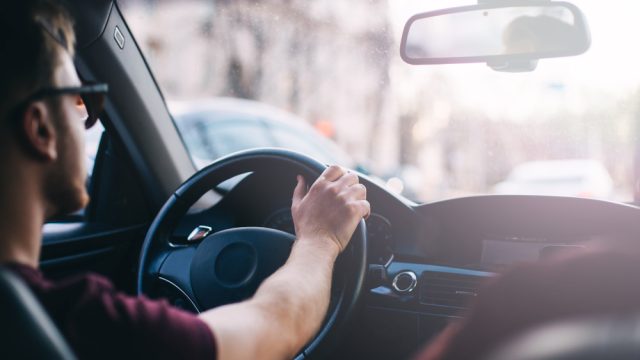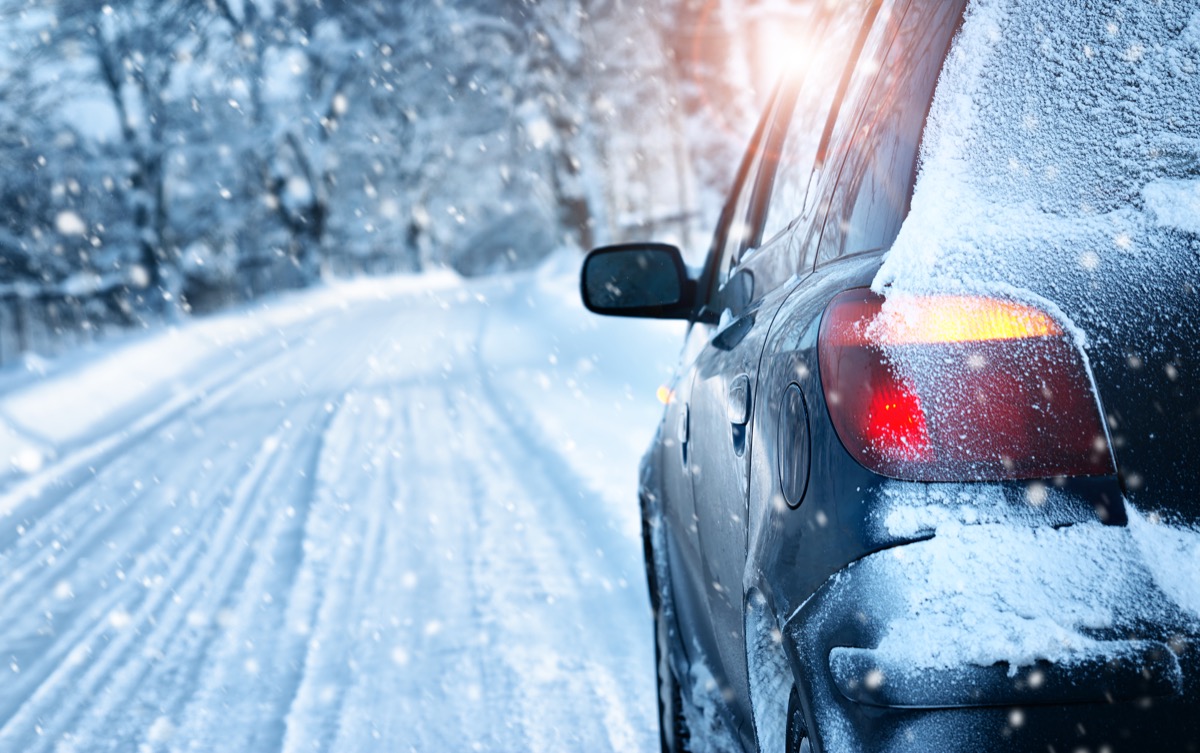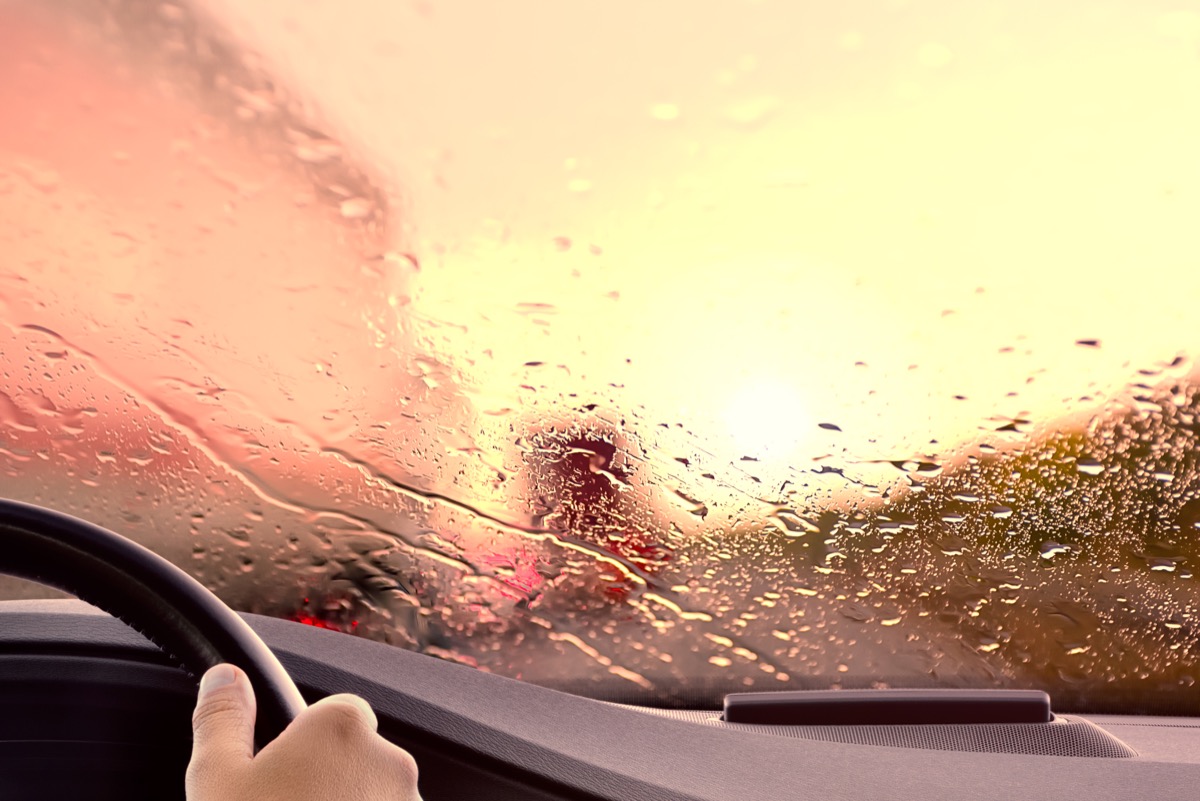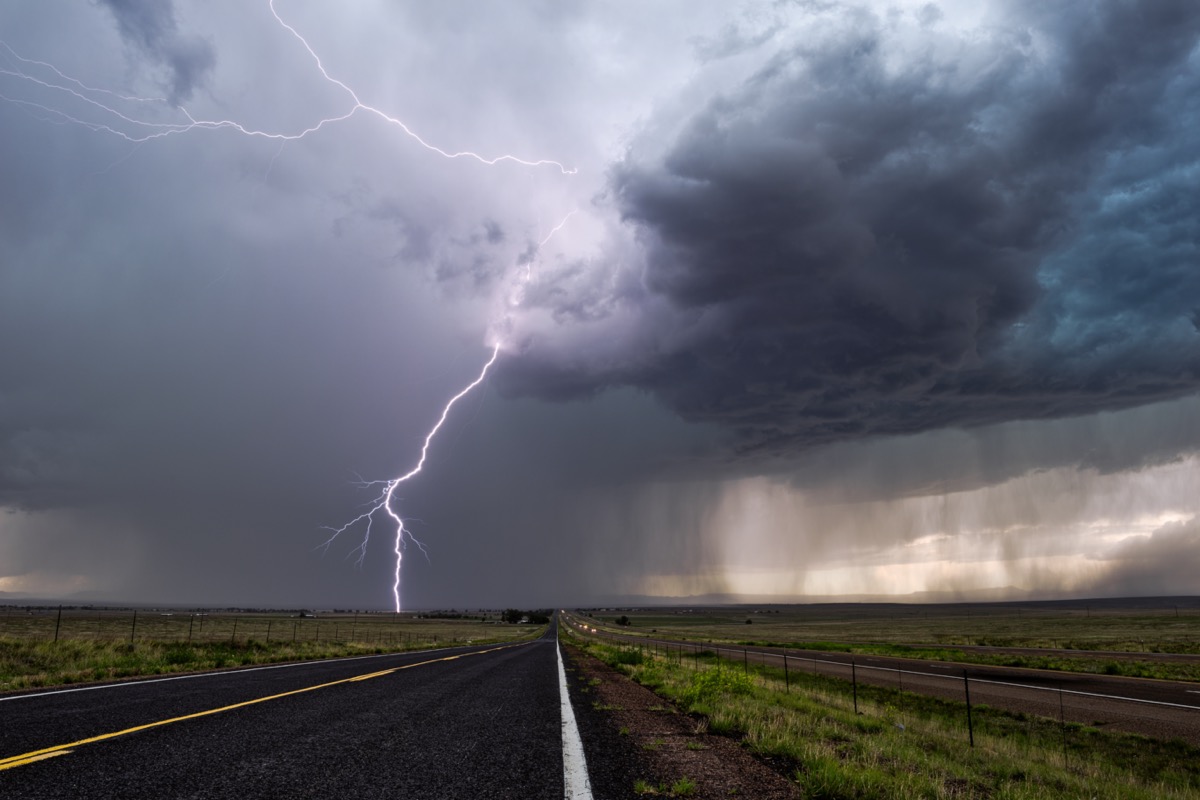Parking Your Car Here Is “Spectacularly Dangerous,” Experts Warn

Staying safe while driving typically involves obeying signage and stoplights, staying within the speed limit, and avoiding distractions such as texting. However, the dangers of the road aren’t always limited to moving vehicles. And according to experts, there’s one particular place where parking your car can be “spectacularly dangerous.” Read on to see which error could have fatal consequences while driving.
READ THIS NEXT: Don’t Fill Up Your Gas Tank Without Doing This First, Police Now Warn.
A moving vehicle can be one of the most dangerous places to be during extreme weather.

Whether you’re well along your way on a long road trip or just making a quick run to the store to pick up essentials, even the most skilled drivers dread getting caught in bad weather on the road. In fact, driving a car can be one of the very worst places to be when inclement conditions strike. According to the U.S. Department of Transportation (DOT), out of the 5.8 million car crashes recorded from 2007 to 2016, roughly 1.2 million—or 21 percent—were related to extreme weather.
The agency also reports that these accidents led to more than 418,000 injuries and an average of 5,376 fatalities a year, making up 16 percent of all car-related deaths during that period. By comparison, extreme weather such as hurricanes, tornadoes, flooding, lighting, and extreme heat cause an annual average of 379 deaths of people who weren’t driving during the same timeframe, per The Weather Channel.
Experts warn that parking your car in one place during extreme weather is “spectacularly dangerous.”

Finding yourself suddenly caught in severe weather on the road can be a terrifying experience, especially if your visibility is reduced or road conditions become challenging to navigate. But even in the worst situations, experts still warn that stopping a vehicle in one specific place on the road is not nearly as safe of an idea as it may seem to be.
“Driving is always the number one danger when it comes to storms, and unfortunately, one of the big issues I’ve run into again and again is people hiding their cars beneath bridges,” Mark Robinson, a storm chaser and meteorologist with The Weather Network in Canada, said in an interview with the channel. “It’s hard for me to emphasize how spectacularly dangerous it is for other drivers when someone does that.”
RELATED: For more up-to-date information, sign up for our daily newsletter.
Overpasses don’t provide the kind of protection most people believe they do.

For some, staying put under a concrete overpass may seem like the only way to protect yourself from damaging hail or other intense weather that strikes out of the blue. But even besides the possibility of potential collisions, the decision could be putting others in danger: Any stationary vehicles blocking the roadway can also leave other motorists stranded without cover while also preventing them from reaching safety ahead, the Weather Channel reports.
And while the sturdy concrete structures may seem like a safe haven from intense winds during a tornado, parking beneath an overpass can actually be one of the worst places to find yourself when one passes. This is because winds underneath the structures are often stronger than in the open, putting you even more in harm’s way.
“Seeking shelter under a highway overpass is to become a stationary target for flying debris, with a substantial risk of being blown out and carried by the tornado winds,” the National Oceanic and Atmospheric Administration (NOAA) said in a presentation during the 1999 National Weather Association Annual Meeting, per the Weather Channel. “Safety in such a location is merely an illusion.”
Here’s what you should do if you ever find yourself caught in dangerous weather on the road.

Adverse weather will always be a part of life, but experts say there’s still plenty you can do to minimize your risk on the road. Before getting in the car, check your local conditions and forecast for any potential passing storms, and consider delaying your trip if there’s any activity in your area, according to a tweet from the National Weather Service (NWS).
If you do find yourself caught off guard while driving and it becomes too dangerous to keep moving, Robinson recommends pulling off as far over as you can to the side of the road before stopping to make sure you’re not blocking traffic in any way. If you’re on a stretch of road with no shoulder or safe place to stop, slow down and keep driving until you can exit the highway or find a place to safely stop your car.
“Otherwise, proceed slowly until the weather is clear enough to continue,” he recommends.
READ THIS NEXT: If Your Car Has This, Remove It Immediately, Police Warn.